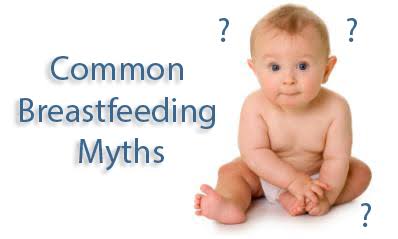WORLD BREASTFEEDING WEEK (2): BARRIERS AGAINST BREASTFEEDING IN THE 21ST CENTURY

The World Health Organization recommends optimal exclusive breastfeeding for every newborn, from the first hour after birth till 6 months of life, after which it can be coupled with other acceptable food options for a suitable duration till the child gets weaned. However, some women encounter various challenges in their attempt to start or continue the practice.
Despite the global initiatives established to enhance exclusive breastfeeding (EBF), several factors yet pose an encumbrance. According to a survey done by UNICEF in the UK, one factor that poses a barrier to EBF includes inaccessibility to professional medical services that support the practice of exclusive breastfeeding.
The Cambridge University Press, in 2017, published an article on a survey done to address the barriers to exclusive breastfeeding in low and middle-income countries (of which Nigeria was among). They identified sixteen impediments to exclusive breastfeeding. One of these is inadequate exposure of women to counseling on the importance of EBF during antenatal care, as women who are not exposed to good professional counsel during antenatal are less prone to practice exclusive breastfeeding.
Maternal illnesses, stress, personal frustrations, the onset of painful breastfeeding, and other factors also contribute to the unwillingness of some mothers to continue breastfeeding.
Likewise, child delivery outside a health facility was reported from the survey as a discouraging factor, as well as delivery by cesarean section.
The survey found that women who deliver vaginally are more likely to practice EBF.
The introduction of breast milk to newborns within the first hour after birth as opposed to a later time makes mothers more likely to practice exclusive breastfeeding, and the misguided cultural practice of discarding colostrum also impedes proper breastfeeding. Despite the move of civilization, several mothers in rural and illiterate regions remain misinformed on the actual nature of colostrum.
Inadequate maternal nutrition also plays a significant role, especially in sub-Saharan Africa. Undernourished mothers cannot produce sufficient quantity or quality of milk to feed their babies, which predisposes them to discontinue.
Breastfeeding problems in the form of physical breast anomalies like mastitis, cracked or inverted nipples, breast engorgement, etc also serve as a hindering factor.
Amongst younger or very physically conscious women, the fear of having saggy breasts have made some avoid the practice.
One or more of these factors in combination have over the years hindered the establishment of breastfeeding as a universal observance in Nigeria and other parts of the world.
COMBINING BREASTFEEDING AND WORK FOR WORKING MOTHERS

Photo credits: https://images.app.goo.gl/eXEqiVNraC5ZdNaA8
For mothers who understand the value of breastfeeding, workplace conditions make the practice difficult for many. Below are some tips
on how working mothers can juggle both work and breastfeeding efficiently:
Expressing breast milk either manually or through the aid of a pump.
Practicing both breastfeeding and cup and spoon feeding before returning to work. This enables the baby to become comfortable with cup and spoon feeding when the mother is absent.
Utilizing maternal rights as a breastfeeding mother in supportive workplaces by requesting breaks to either pump breast milk or attend to the child’s needs.
Arranging for child care close to the workplace to enhance breastfeeding during breaks.
Asking for help and support from workers or spouses
DEBUNKING THE MYTHS ABOUT BREASTFEEDING

Photo credits: https://images.app.goo.gl/sbhTxeHrjVy9UQc59
Myth 1: Breastfeeding is easy
The early days of breastfeeding are quite challenging, however, with continual practice it gets comfortable.
Myth 2: Breastfeeding in public is not acceptable.
A woman can breastfeed her babies anytime and anyplace, whenever they are hungry. There are no laws that restrict breastfeeding in the public.
Myth 3: Breastfeeding mothers should not take any medication.
Unless it is plainly stated, most common medicines are actually safe for mothers to take. However, it should only be according to the prescription of medical personnel.
Myth 4: It would be hard to breastfeed if your breasts are quite small or too large.
Breasts of all sizes produce sufficient amounts of milk for breastfeeding. Regardless of the size of your breasts, with proper positioning a baby can feed conveniently.
Myth 5: Formula is as good as breast milk.
Breastmilk contains more vital nutrients needed for normal child development than formula. It is also easier to digest and safer to consume than formula.
Myth 6: Don’t breastfeed when you are sick; you can pass it on to your baby.
When a mother is sick, her body produces antibodies that fight off the germs that cause the illness. Thus, the germs may not contaminate her breast milk but the antibodies do, which in turn provides the baby with stronger immunity. For infections that are transferable via breastfeeding, such as HIV or hepatitis, under the management of a competent physician such transference can be prevented.
Breastfeeding is nature’s gentle nurture and it should not be bypassed unless absolutely unavoidable as its effect will not only be seen on the child, but on the family and society at large.
ALADI VICTORIA


